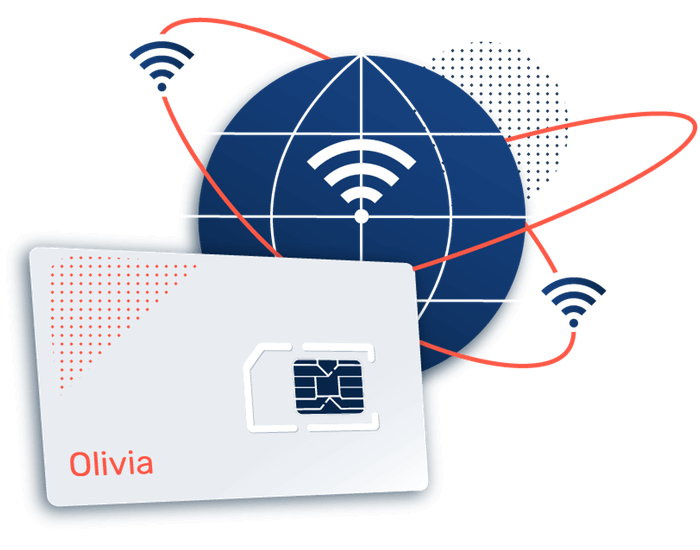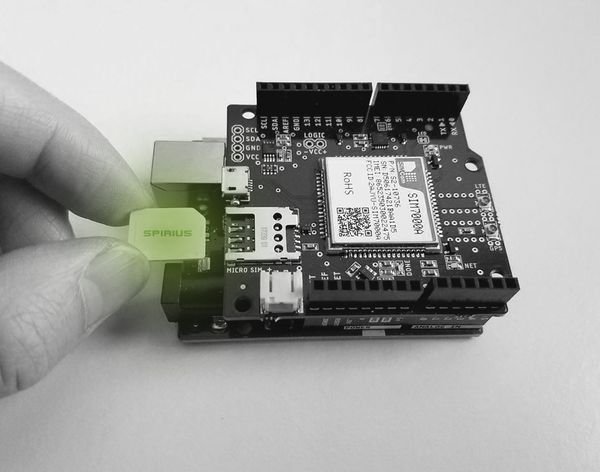Cloud Connectivity In IoT Exploring the World of IoT Connectivity
Internet Connectivity In IoT How Cellular IoT Connectivity Operates
The panorama of the Internet of Things (IoT) is huge and varied, offering an array of connectivity choices tailor-made to different use cases. In this complex ecosystem, the selection between cellular and non-cellular IoT connectivity performs a pivotal function in figuring out the success of IoT deployments.
Cellular IoT connectivity makes use of current cell networks to facilitate communication. IoT Connectivity Platform. This expertise leverages the infrastructure of established cellular providers, thereby ensuring extensive protection and high information transfer charges. The convenience of utilizing cellular networks signifies that extensive geographical areas may be covered with out the need for laying new cables or deploying extra infrastructure.
One of the significant advantages of cellular connectivity is its proven reliability. Networks have been optimized over the years, making certain that they will handle a massive number of related devices concurrently. In environments where consistent and reliable performance is essential, cellular IoT provides a strong foundation, especially for applications like telemedicine, vehicle monitoring, or smart metropolis options.
Connectivity Management Platform IoT Common IoT Connectivity Technologies and Use Cases
Conversely, non-cellular IoT connectivity refers to technologies like Wi-Fi, Bluetooth, Zigbee, and LPWAN. These choices often operate in short-range scenarios and are sometimes designed for particular functions. They allow for the institution of native networks that can achieve high-speed knowledge transfers however with restricted range. This can make them a superb alternative for applications confined to a specific area, like house automation or industrial monitoring inside a factory.
The choice between these two connectivity types primarily hinges on the necessities of the specific application. For example, a sensible meter deployed in a distant location could considerably profit from cellular connectivity as a result of extended range and skill to transmit knowledge over longer distances. On the opposite hand, a wise residence gadget, which operates inside a confined house, may make the most of Wi-Fi or Bluetooth, given their capability to provide strong local connectivity at lower costs.
Moreover, power consumption varies significantly between cellular and non-cellular technologies. Cellular devices, while increasingly efficient, usually eat extra energy compared to their non-cellular counterparts. This is a important consideration for battery-powered gadgets that goal to function for prolonged durations without having frequent recharges or battery replacements. Non-cellular technologies typically permit for energy-saving modes which may prolong operational life, making them best for purposes where longevity is paramount.
Web Connectivity In IoT Growth of Usable IoT Satellites
Cost components additionally play a big position in making a decision between cellular and non-cellular connectivity. The deployment of cellular IoT gadgets sometimes entails service plans that incorporate ongoing subscription costs. In contrast, non-cellular choices may require an upfront funding in infrastructure, however they can lead to decrease operational costs in the lengthy term.
Security considerations arise distinctly in each kinds of connectivity. Cellular networks offer a level of built-in safety due to their closed nature and reliance on established protocols. Encryption and authentication processes are typically sturdy, making it troublesome for unauthorized users to entry the network. Non-cellular technologies, while handy, can probably expose devices to elevated security risks, particularly in open networks like public Wi-Fi - Vodafone Managed IoT Connectivity Platform.
The scalability of an IoT system is one other issue to assume about when deciding on connectivity choices. Cellular networks tend to provide greater scalability as a outcome of their ability to accommodate a big volume of devices over wide areas. This is especially helpful for enterprises trying to broaden their IoT deployments without the want to overhaul present infrastructure.
Managed IoT Connectivity Services Essential Information on IoT Connectivity
Non-cellular networks can even scale, but they're often limited by range and knowledge dealing with capabilities. In congested environments or click for info densely populated areas, the efficiency of non-cellular choices could diminish, creating bottlenecks that might affect the general effectivity of an IoT ecosystem. This contrast can have an effect on the long-term viability of an answer depending on the expected progress and complexity of the applying.
Latency is a vital component that distinguishes cellular and non-cellular IoT connectivity. Cellular networks have improved significantly over recent years, however latency can nonetheless be larger in comparability with some non-cellular options. For applications requiring real-time responses, similar to autonomous driving or industrial automation, lower latency connections are important. In such circumstances, edge computing combined with non-cellular technologies might provide the mandatory response instances.
In summation, the choice between cellular and non-cellular IoT connectivity is way from straightforward. Each option carries distinctive advantages and drawbacks that cater to different software needs. Understanding the specific necessities of a project, from vary and reliability to power consumption and price, is key to creating a well-informed selection.
The direction of IoT deployments continues to evolve, with developments and innovations in each cellular and non-cellular technologies continuously reshaping the panorama. As organizations become increasingly aware of the implications of their connectivity decisions, the significance of tailored options to suit distinctive use circumstances will only proceed to grow.
IoT Connectivity Pricing Definition of Internet of Things

Future developments in standards and protocols might bridge some gaps between cellular and non-cellular options, doubtlessly resulting in hybrid solutions that capitalize on the strengths of each. Exploring these avenues might be important for stakeholders in navigating the ever-changing world of IoT connectivity.
Ultimately, as companies embark on their IoT journeys, the proper connectivity selection will considerably impression their operational effectivity, cost administration, and skill to innovate. By rigorously considering all relevant elements, organizations can harness the total potential of their IoT initiatives, leading to transformative outcomes in numerous industries.
- Cellular IoT connectivity leverages established cell networks, providing extensive coverage in city and rural areas.
- Non-cellular IoT choices, corresponding to LoRaWAN and Sigfox, are sometimes cheaper to deploy and maintain due to their lower infrastructure requirements.
- Cellular connections typically provide higher knowledge transfer rates, making them suitable for purposes requiring real-time knowledge transmission.
- Non-cellular solutions are most likely to consume less power, prolonging the lifespan of battery-operated units in remote applications.
- The rollout of 5G technology enhances cellular IoT capabilities, allowing for more devices to connect concurrently with minimal latency.
- Non-cellular technologies could face challenges with vary and scalability, notably in densely populated environments with interference.
- Security features vary, with cellular connections usually incorporating superior encryption standards, whereas non-cellular options may use less complicated safety protocols.
- Geographic and environmental elements can impact the efficiency of non-cellular techniques, making them less reliable in sure places.
- Device management and over-the-air updates can be extra streamlined with cellular connectivity as a end result of present frameworks supported by telecom suppliers.
- The alternative between cellular and non-cellular IoT connectivity largely is decided by specific use circumstances, prices, and desired network capabilities.
What is the main distinction between cellular and non-cellular IoT connectivity?
Cellular IoT connectivity utilizes mobile networks, permitting units to communicate over lengthy distances. Non-cellular IoT connectivity relies on alternatives like Wi-Fi, Bluetooth, or LoRaWAN, sometimes suited for shorter ranges and particular environments.
IoT Connectivity Service Providers Growth of Connected IoT Devices
Which connectivity choice is more dependable for IoT applications?
Cellular connectivity generally provides higher reliability as a outcome of robust community infrastructure and coverage. Non-cellular choices could be less dependable, especially in areas with weak alerts or data congestion.
How do costs evaluate between cellular and non-cellular IoT connectivity?
Web Connectivity In IoT Consolidation of IoT Connectivity
Cellular connectivity typically incurs higher operational costs as a outcome of data plans and subscription fees, while non-cellular choices would possibly involve lower upfront costs but can incur bills associated to maintenance and infrastructure.
What types of IoT applications benefit most from cellular connectivity?
Applications requiring fixed information transmission or wide geographic coverage, similar to vehicle monitoring, smart cities, and remote monitoring, significantly benefit from cellular connectivity.
IoT Connectivity Provider Survey on IoT Connectivity Technologies and Applications
In what eventualities is non-cellular IoT connectivity preferred?
Non-cellular IoT connectivity is most well-liked in eventualities the place budgets are restricted, similar to house automation and local sensor networks, special info or where units need to operate within a contained space.
How does energy consumption range between cellular and non-cellular IoT devices?
Cellular gadgets sometimes eat more power as a result of their need to continuously talk over cell networks. Non-cellular gadgets can be designed for low-power consumption, especially in short-range applications.
IoT Global Connectivity Growth of Usable IoT Satellites

Is security completely different between cellular and non-cellular IoT options?
Both cellular and non-cellular options have unique security challenges. Cellular networks usually have built-in safety protocols, while non-cellular options require further measures, like encryption, to guard information.
IoT Connectivity Products What Does IoT Connectivity Look Like?

Can non-cellular IoT connectivity scale effectively?
While non-cellular IoT connectivity can scale by method of the number of gadgets, it might face limitations in performance and vary. Cellular networks are designed to manage a lot of connections effectively, making them a extra sensible choice for scalable purposes.
IoT Connectivity Products Enabling Internet of Things Connectivity
What function does latency play in choosing between cellular and non-cellular IoT connectivity?

Latency may be essential for functions requiring real-time responses, corresponding to autonomous vehicles. Cellular networks typically provide decrease latency than many non-cellular choices, making them preferable for time-sensitive functions.